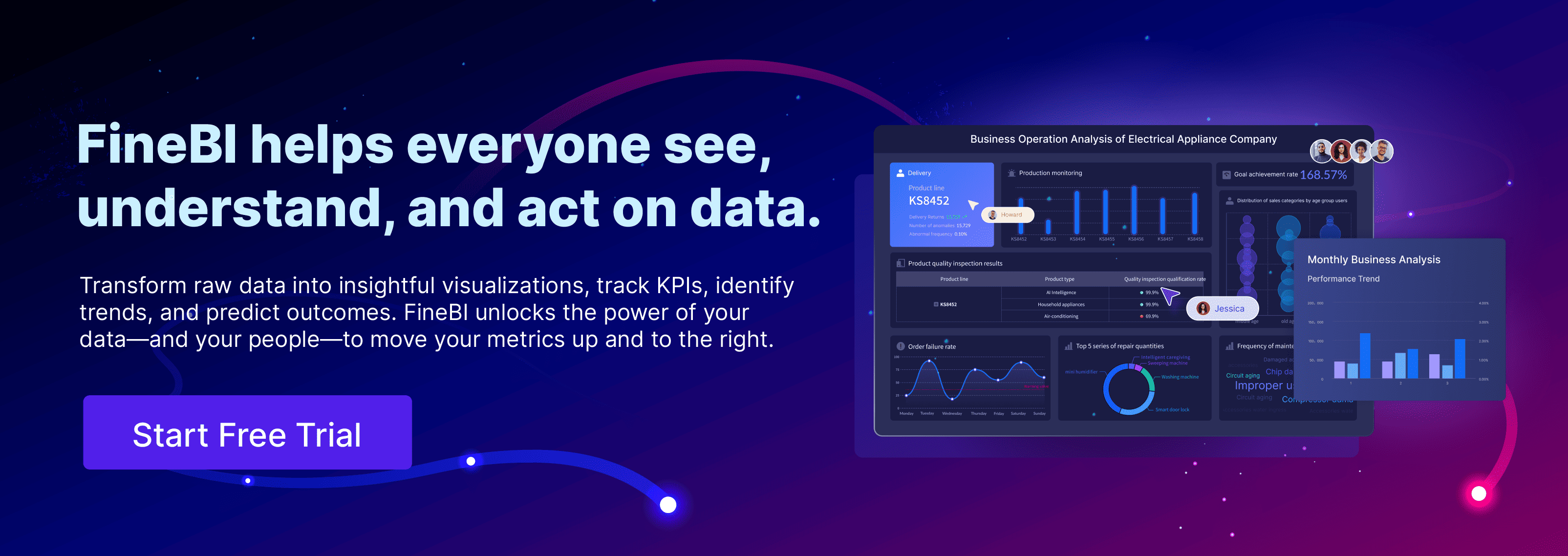Smart solutions drive retail operations success by empowering organizations to increase operational efficiency and respond quickly to changing market demands. Data-driven strategies help retailers optimize every step, from inventory management to customer service. FineBI from FanRuan enables teams to harness real-time insights, transforming retail operations into agile, high-performing environments. Retail strategies that leverage advanced analytics and automation deliver measurable efficiency gains and foster sustainable growth.
Retail Operations Optimization
Retail operations optimization forms the backbone of a successful retail business. Companies that focus on streamlining operations, optimizing inventory management, and improving order fulfillment see measurable gains in operational efficiency and profitability. These strategies help retailers adapt to changing market demands, reduce costs, and deliver better customer experiences.
Process Optimization
Leading retailers use a structured approach to process optimization. They begin by assessing current workflows to identify bottlenecks and gather baseline data. Setting clear, measurable goals aligned with business strategy ensures that every improvement supports overall objectives. Retailers then prioritize high-impact areas, develop detailed implementation plans, and assign responsibilities with clear timelines. Pilot projects allow teams to test new processes before scaling successful initiatives across the organization.
- Assess current processes and identify bottlenecks.
- Set measurable goals aligned with business strategy.
- Prioritize high-impact areas for improvement.
- Develop detailed implementation plans with clear responsibilities.
- Launch pilot projects and scale successful changes.
- Monitor KPIs and gather feedback regularly.
- Adjust processes based on data and feedback.
- Foster a culture of continuous improvement.
- Leverage technology to automate and integrate systems.
- Review overall impact and scale proven efficiency measures.
Retailers that embrace process optimization often achieve significant cost reductions and productivity gains. By eliminating waste and inefficiencies, they can reduce operational costs by 25-30% and increase productivity by up to 35%. Cycle times drop by as much as 60%, and resource utilization improves, leading to higher revenue per employee and a strong return on investment.
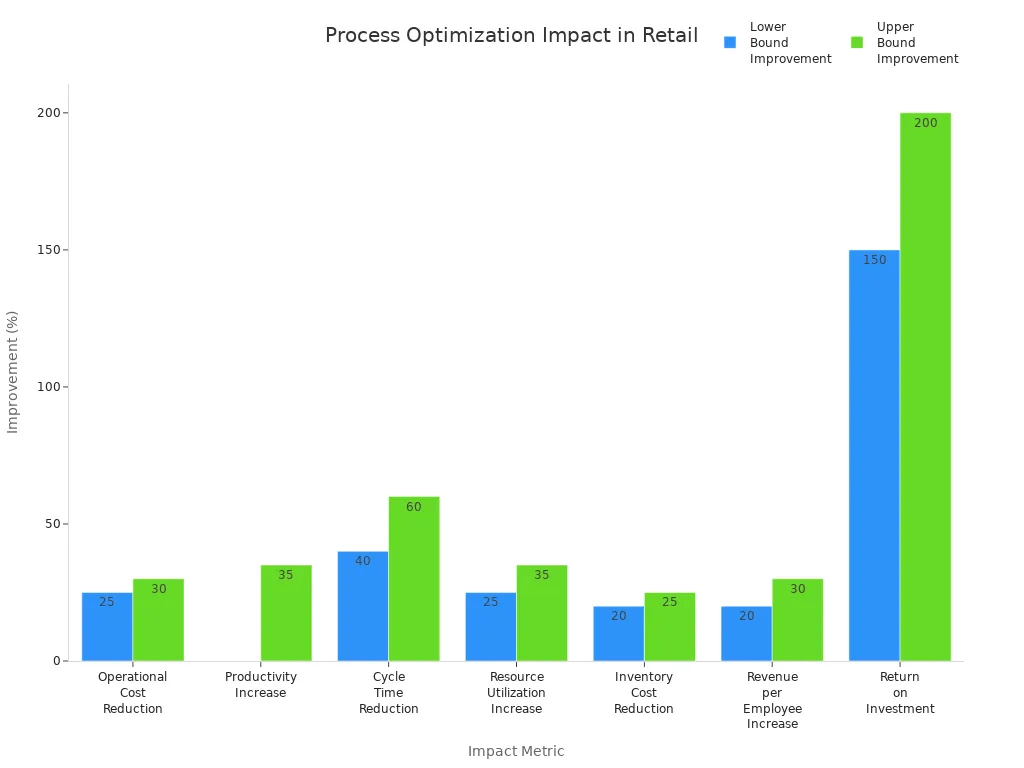
FineBI plays a crucial role in process optimization. FineBI integrates data from multiple sources, providing real-time analytics and dashboards that help managers monitor KPIs and make informed decisions. The platform’s self-service analytics and collaborative features empower teams to act quickly, driving continuous improvement and supporting efficient retail operations.
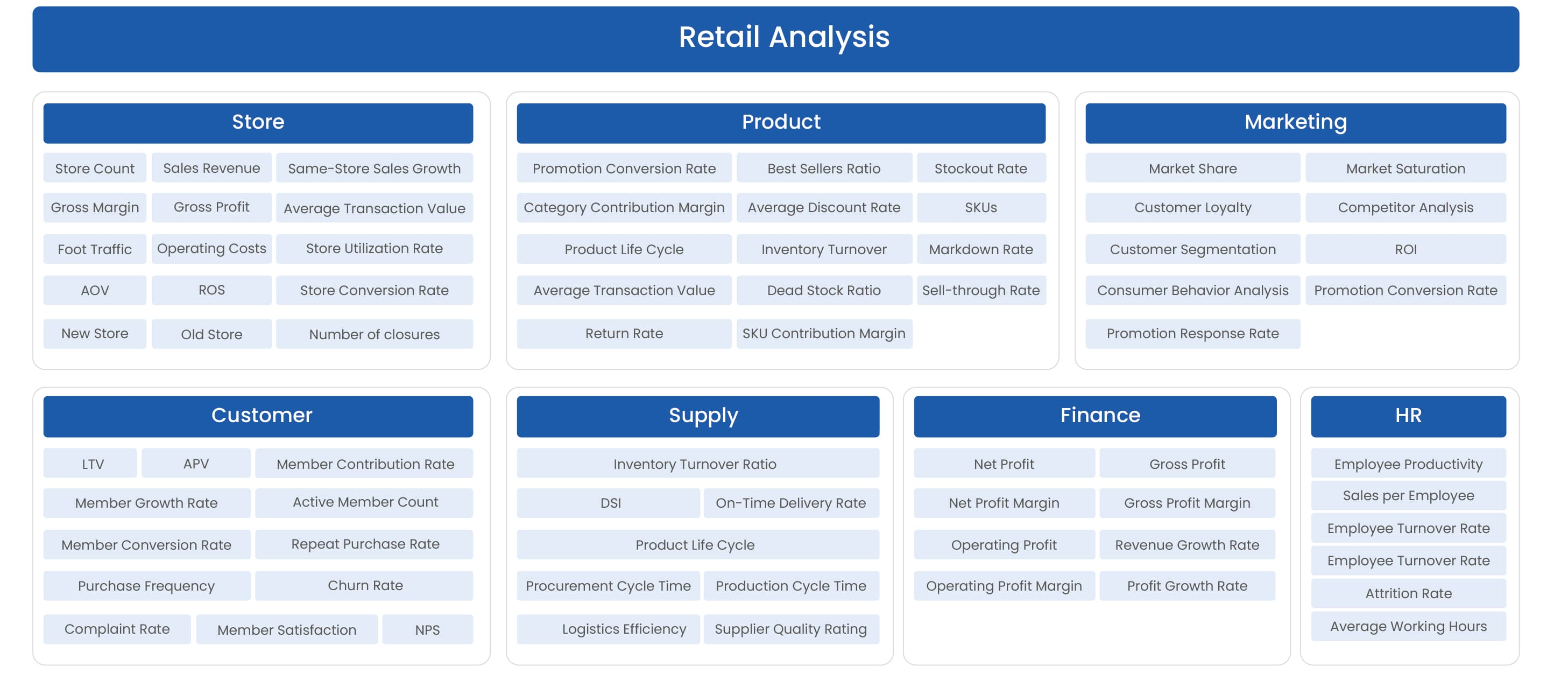
Inventory Management
Effective inventory management is essential for retail operations optimization. Retailers use several proven techniques to reduce stockouts and overstock situations:
- ABC analysis classifies inventory into high-value, medium-value, and low-value categories, allowing for targeted control and resource allocation.
- Just-in-time inventory ensures stock arrives only when needed, reducing holding costs and minimizing excess inventory.
- Cycle counting and barcode scanning maintain inventory accuracy and minimize discrepancies.
- Reorder point optimization triggers timely replenishment, preventing both stockouts and overstock.
- Demand forecasting uses historical data and trends to align inventory levels with expected sales.
- Real-time inventory tracking and automation replace manual processes, increasing speed and accuracy.
- Strong supplier relationships ensure timely deliveries and flexibility in response to demand changes.
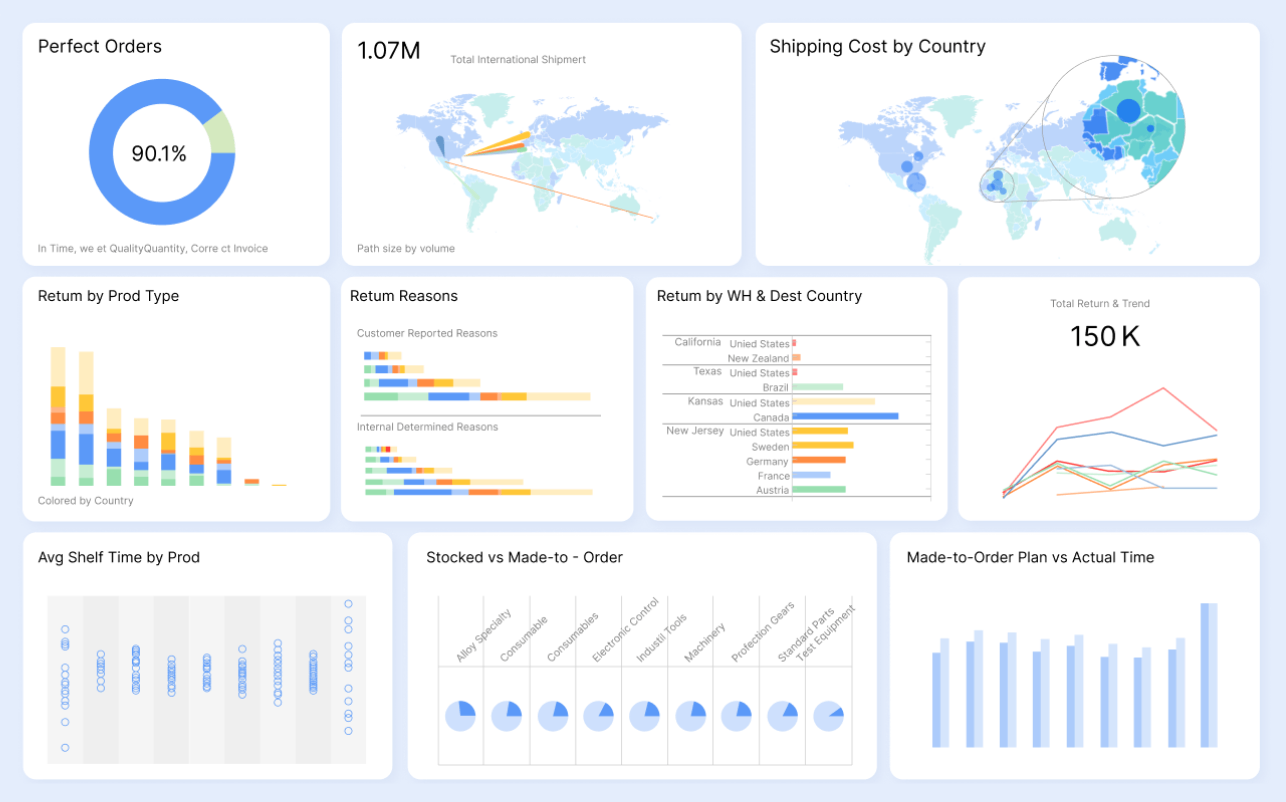
Retailers also use inventory analytics to gain insights into sales patterns and supply chain performance. Accurate stock levels, safety stock, and alternative models like drop shipping further support inventory optimization.
FineBI enhances inventory management by providing real-time feedback and instant data validation. Retail teams can analyze inventory data without technical expertise, using customizable dashboards and reports tailored to their specific needs. FineBI’s integration capabilities consolidate sales, inventory, and demand data from various systems, enabling comprehensive analysis and faster decision-making. Predictive analytics help anticipate inventory needs, reduce costs, and increase profit margins.
| Feature | Benefit for Inventory Management in Retail Operations |
|---|---|
| Multiple data source integration | Consolidates sales, inventory, and demand data for comprehensive analysis |
| Real-time data verification | Ensures inventory data accuracy and up-to-date information |
| Collaborative dashboard editing | Improves coordination by allowing teams to jointly monitor inventory levels |
| SQL-free data manipulation | Speeds up insights generation for non-technical users |
| Extensive built-in chart library | Tracks inventory performance and demand patterns |
| Over 100 analysis templates | Facilitates quick report creation tailored to retail scenarios |
| Enhanced decision-making tools | Optimizes stock levels and reduces costs |
| User-friendly interface | Enables efficient inventory control across teams |
| Business scenario adaptability | Customizable dashboards and reports for specific inventory management needs |
Order Fulfillment
Order fulfillment stands as a critical pillar in retail operations optimization. Retailers monitor key performance indicators to evaluate and improve fulfillment efficiency:
- Order accuracy ensures customers receive the correct items, supporting satisfaction and cost control.
- Inventory accuracy tracks how well physical stock matches records, aiding demand planning and preventing stock issues.
- Receiving speed measures how quickly products are processed and made available for sale, impacting delivery times.
- Shipping timeliness assesses how fast orders are shipped after receipt, directly affecting customer experience.
Retailers use business intelligence platforms like FineBI to automate order routing, reducing manual data transfers and speeding up delivery. Direct order receipt by fulfillment centers minimizes inventory mismatches and picking mistakes. AI-powered automation optimizes pick-pack-ship processes, ensuring fast and accurate fulfillment. Scalability features allow retailers to add SKUs quickly, handle seasonal fluctuations, and launch new sales channels with ease.
Tip: Retailers who invest in retail operations optimization through advanced analytics and automation consistently see improvements in profitability, customer satisfaction, and the ability to increase profit margins.
Technology Strategies for Retail Operations
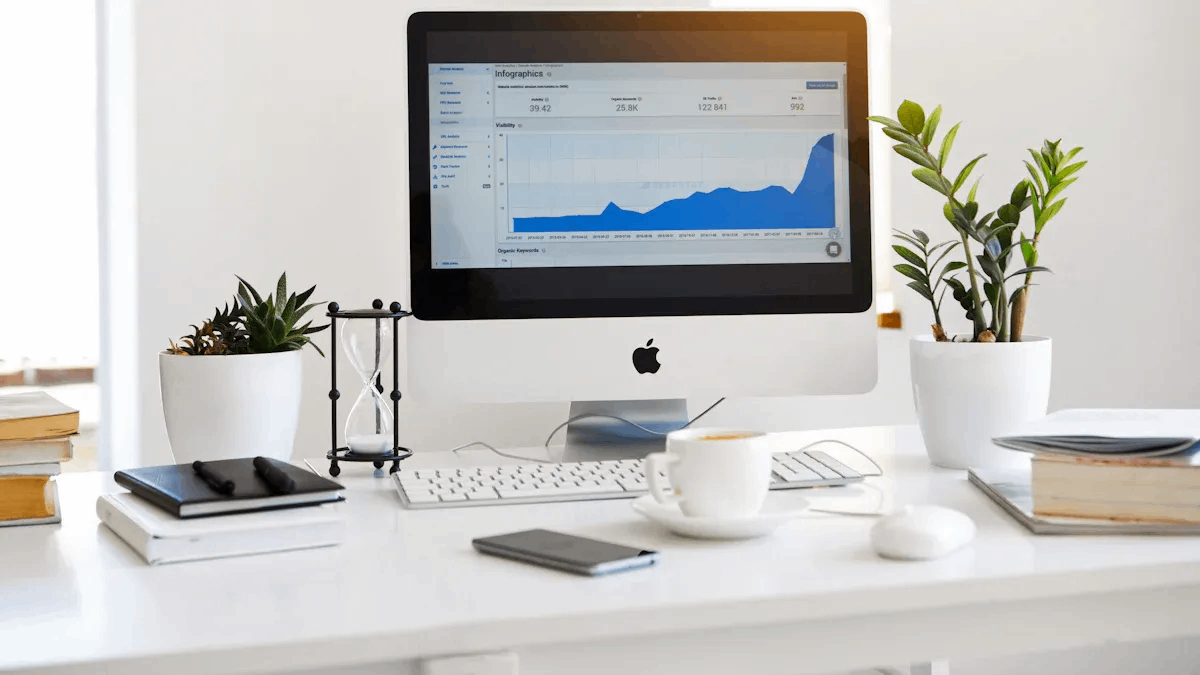
Retailers today face intense competition and rapidly shifting consumer expectations. To stay ahead, they must leverage technology to drive operational efficiency and deliver superior customer experiences. Technology and automation form the backbone of modern retail optimization, enabling businesses to streamline processes, reduce costs, and respond quickly to market changes.
Technology Integration
Effective technology integration stands as a cornerstone for retail optimization. Retailers who connect their point-of-sale (POS) systems, inventory management, customer relationship management (CRM), and financial systems into a unified platform see dramatic improvements in workflow automation and data accuracy. This integration eliminates silos, allowing seamless communication between departments and reducing manual errors.
- Sales integration tracks buying habits, improves customer management, and boosts retention.
- Finance integration automates data sharing, reduces redundancy, and ensures compliance.
- POS integration enables faster service, real-time inventory tracking, and secure customer data management.
- Unified platforms automate order processing, inventory tracking, and internal communication.
- Advanced integration supports personalized marketing and consistent multichannel support.
- Real-time inventory visibility and automated reordering optimize stock management and supplier relationships.
- Predictive analytics enable data-driven decisions and agile responses to market trends.
- Integration platforms connect ERP, POS, accounting, payment, and logistics systems, streamlining operations and increasing sales.
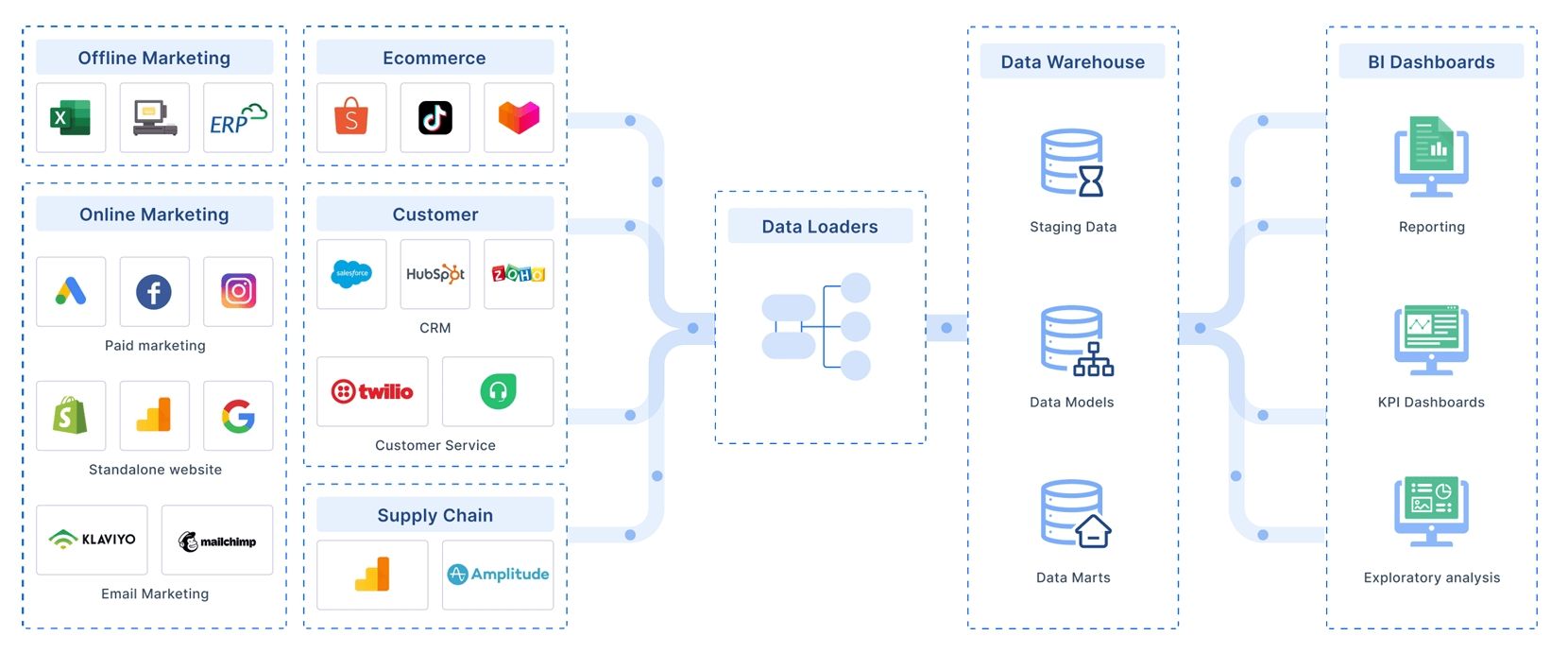
| Feature Category | Description |
|---|---|
| Data Integration | Connects with 30+ big data platforms, SQL sources, Excel files, and multi-dimensional databases. |
| Data Modeling | Supports relationship-based modeling, manual linkage, and composite primary key linkage for joint analysis. |
| Data Cleaning | Provides low-code visual data preprocessing and cleaning for heterogeneous data, ensuring standardized data. |
| Data Management | Includes modules for data sharing, collaboration, and admin review processes. |
| Data Collaboration | Enables subject collaboration, data sharing with review and authorization, and dashboard sharing. |
| Integration with FineReport | Unified user, permission, and management systems after integration, facilitating seamless platform unification. |
Note: Retailers who leverage technology integration strategies gain a competitive edge by automating workflows, improving data accuracy, and supporting rapid scaling.
Automation Tools
Automation tools have transformed retail operations, driving optimization across the value chain. Retailers deploy a variety of automation solutions to enhance efficiency and reduce manual workload.
- Customer Relationship Management (CRM) tools analyze customer data, personalize shopping experiences, and support targeted marketing.
- Chatbots handle customer service inquiries, reducing wait times and repetitive tasks.
- In-store intelligent video analytics monitor checkout lines, allocate staff, and analyze customer behavior in real time.
- Self-service checkout systems allow customers to scan and pay independently, improving transaction speed and reducing labor costs.
- Automated inventory management systems use AI-driven analytics to forecast demand, manage stock, and minimize discrepancies.
- Point-of-sale (POS) solutions provide real-time sales and inventory monitoring, support loyalty programs, and improve pricing accuracy.
- AI, machine learning, IoT, and robotic process automation (RPA) power these tools, enabling smarter, faster operations.
Retailers like Walmart, Zara, Target, and Tesco have adopted these automation strategies to optimize store performance and customer satisfaction. Automated business analytics help identify trends, forecast demand, and optimize inventory. Behavior analysis tools improve product placement and staffing decisions. Personalized marketing automation increases sales and enhances the customer experience. Automated return processing and store-planning automation further streamline operations.
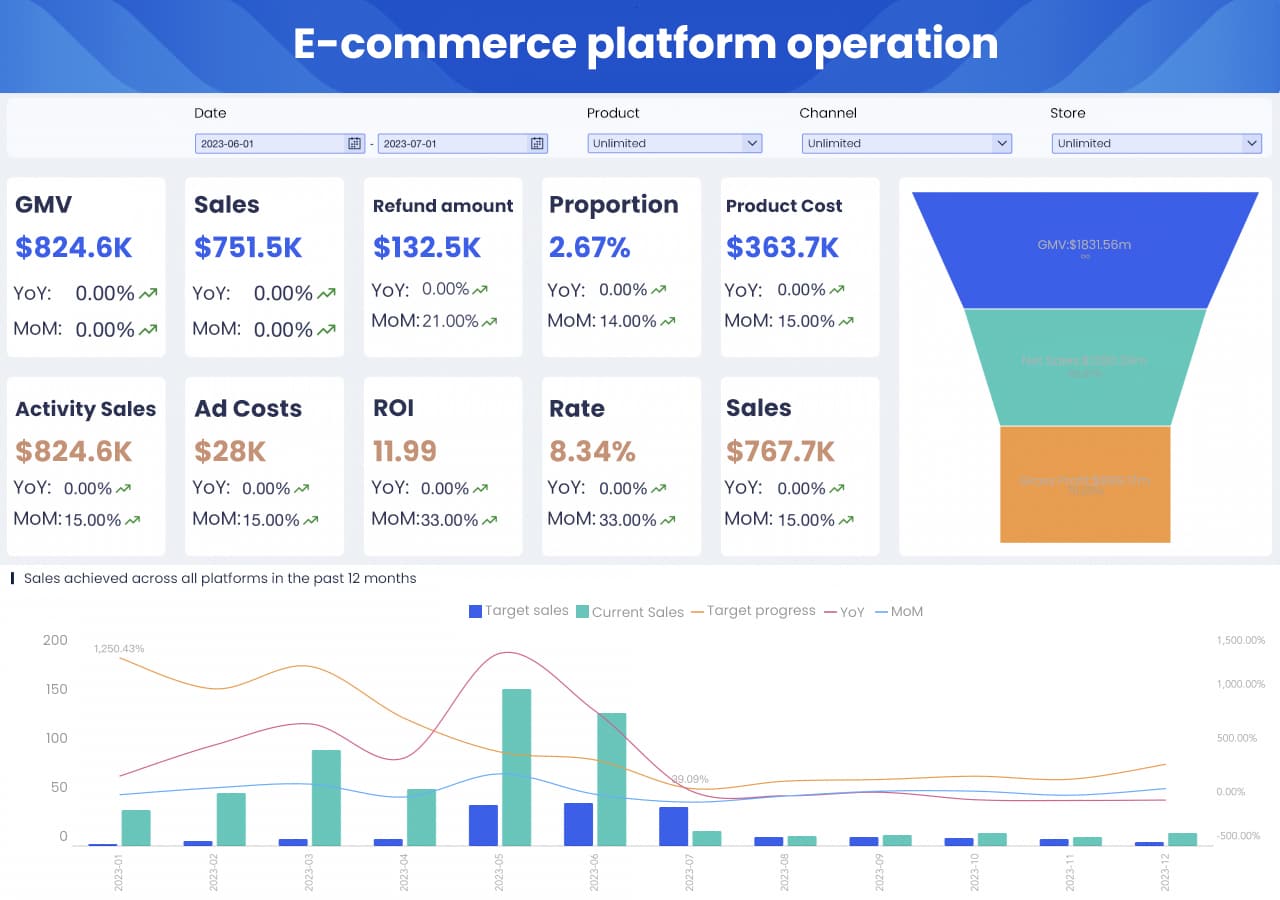
Quantifiable benefits include faster implementation times, lower total cost of ownership, and significant growth in omnichannel gross merchandise value. Automation reduces labor costs, improves inventory accuracy, and enables rapid scaling. Real-time workforce analytics support smarter staffing decisions, aligning labor with customer demand and improving store performance.
| Benefit | Quantifiable Impact |
|---|---|
| Faster implementation times | 20% faster implementation compared to competitors |
| Total cost of ownership (TCO) | 22% lower TCO than competitors |
| Growth in omnichannel GMV | 50% quarterly year-over-year increase |
| Checkout efficiency | Reduction in purchase abandonment due to long lines (51% shoppers abandon) |
| Inventory accuracy | AI tools improve stock accuracy, reducing overstocking and stockouts |
| Cost savings | Labor cost reduction via self-checkout and robotic stock management; fewer errors and waste |
| Scalability | Improved logistics and fulfillment enable rapid scaling |
| Data-driven insights | Advanced analytics provide actionable customer behavior data |
Real-Time Data Solutions
Real-time data solutions have become essential for retail optimization. These systems provide decision-makers with up-to-the-minute insights, enabling quick responses to operational issues such as supply chain disruptions or staffing needs. Real-time data transforms decision-making from reactive to proactive, allowing leaders to detect trends and competitive shifts early.
Retailers use real-time analytics to optimize digital shelf placement, update product descriptions, and respond to customer behavior instantly. For example, Tesco uses IoT sensors and predictive analytics to monitor refrigeration units, preventing food spoilage and optimizing energy efficiency. Acorn-i leverages rapid retail analytics for intraday optimizations, increasing return on ad spend by 27% and reducing campaign optimization time by 90%. DemandHelm’s hourly performance analysis boosted sales by 145% and increased conversion rates by 12%. IKEA uses data science and IoT to analyze customer flow and store layout, improving store design and increasing engagement.
| Retailer/Brand | Real-time Analytics Application | Outcome/Impact |
|---|---|---|
| Tesco | IoT sensors and predictive analytics to monitor refrigeration units and predict malfunctions | Prevented food spoilage, maintained product quality, optimized energy efficiency |
| Acorn-i | Intraday optimizations using rapid retail analytics | Increased ROAS by 27%, reduced campaign optimization time by 90% |
| DemandHelm | Hourly retail and advertising performance analysis | Boosted sales by 145%, increased conversion rate by 12%, increased ROAS by 7% |
| IKEA | Data science analyzing customer flow and store layout using IoT, RFID, video analytics | Improved store design, increased customer engagement and sales |
| Sephora | Omnichannel analytics integrating online and offline data via mobile app and virtual tools | Enhanced customer experience, unified shopping across channels |
Below is a Sales Director Real-time Dashboard:
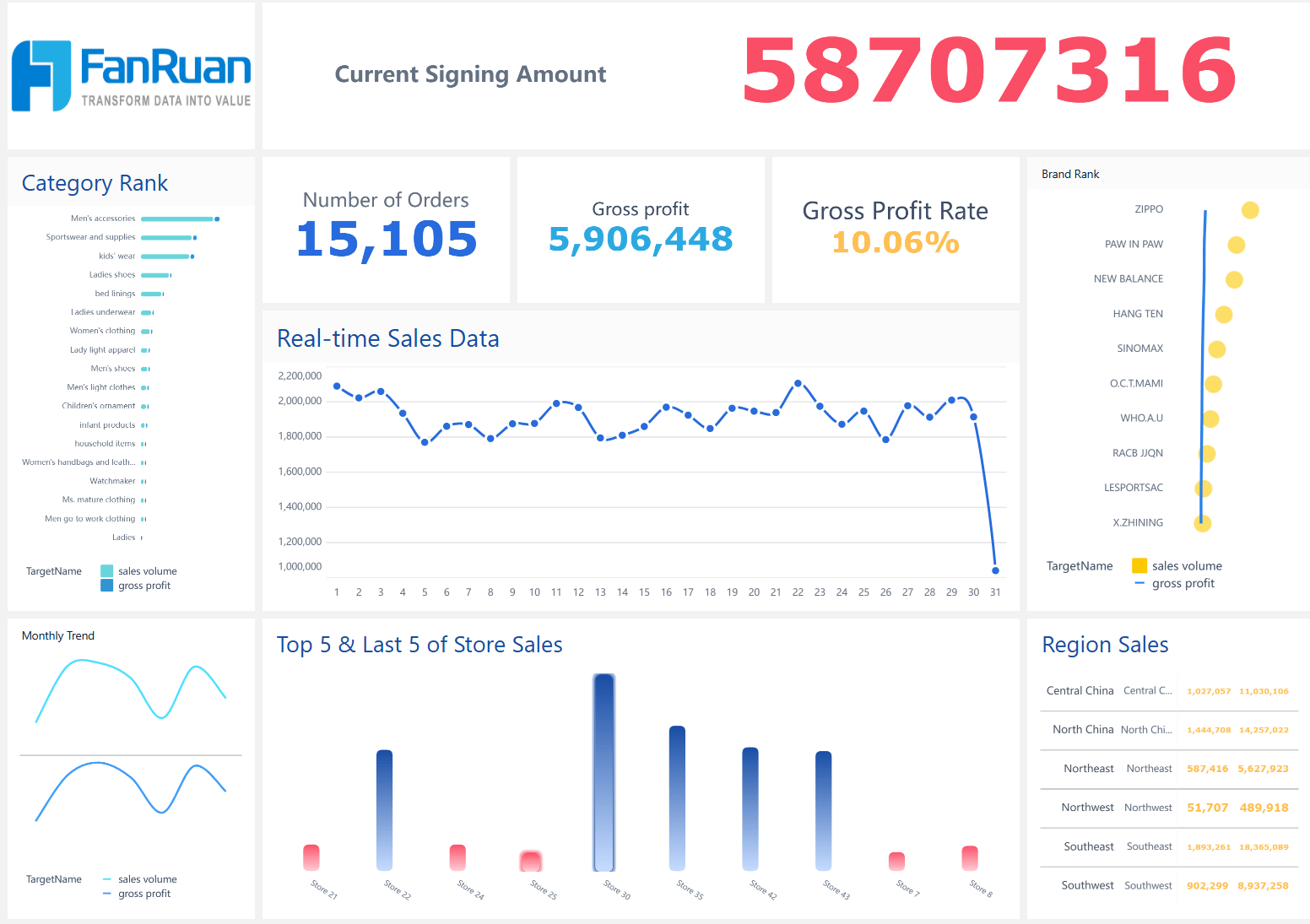
Customer Experience Strategies of Retail Operations

Customer-centric strategies play a vital role in improving retail operations. Retailers who focus on customer experience see higher satisfaction, loyalty, and sales growth. They integrate financial and merchandise planning, break down silos between teams, and use scenario planning to anticipate changes. These approaches help retailers respond quickly to shifts in customer behavior and market trends.
Personalization
Personalization stands at the core of customer service excellence. Retailers use data-driven insights to segment customers, analyze customer behavior, and tailor recommendations. Personalized product suggestions, dynamic pricing, and targeted offers increase satisfaction and loyalty. For example, Amazon’s recommendation engine and Sephora’s loyalty program both use customer data to create unique experiences. AI and machine learning help scale these efforts, ensuring each customer receives relevant offers and service. Post-purchase personalization, such as follow-up messages and exclusive rewards, keeps customers engaged and encourages repeat visits.
| Personalization Technique | Description | Example |
|---|---|---|
| Product Recommendations | Suggest items based on browsing and purchase history | Amazon |
| Tailored Marketing Campaigns | Send targeted emails and offers | Sephora |
| Dynamic Pricing | Adjust prices based on demand and customer segments | Leading e-commerce |
| Loyalty Program Integration | Offer exclusive rewards for loyal customers | Starbucks |
FineBI enables retailers to analyze customer data, uncover trends, and deliver personalized service at scale. This approach builds brand advocates and drives customer service excellence.
Omnichannel Experience
A seamless omnichannel experience allows customers to shop across online and offline channels without friction. Research shows omnichannel shoppers spend more and remain loyal longer. Companies with strong omnichannel engagement retain nearly 89% of their customers. Consistent experiences across platforms build trust and encourage repeat purchases. Retailers who prioritize omnichannel strategies achieve higher revenue growth and operational efficiency. FineBI supports this by integrating data from all channels, enabling real-time analysis of customer behavior and pricing effectiveness.
Note: Omnichannel strategies empower customers to navigate their journey in their preferred way, increasing satisfaction and driving sales growth.
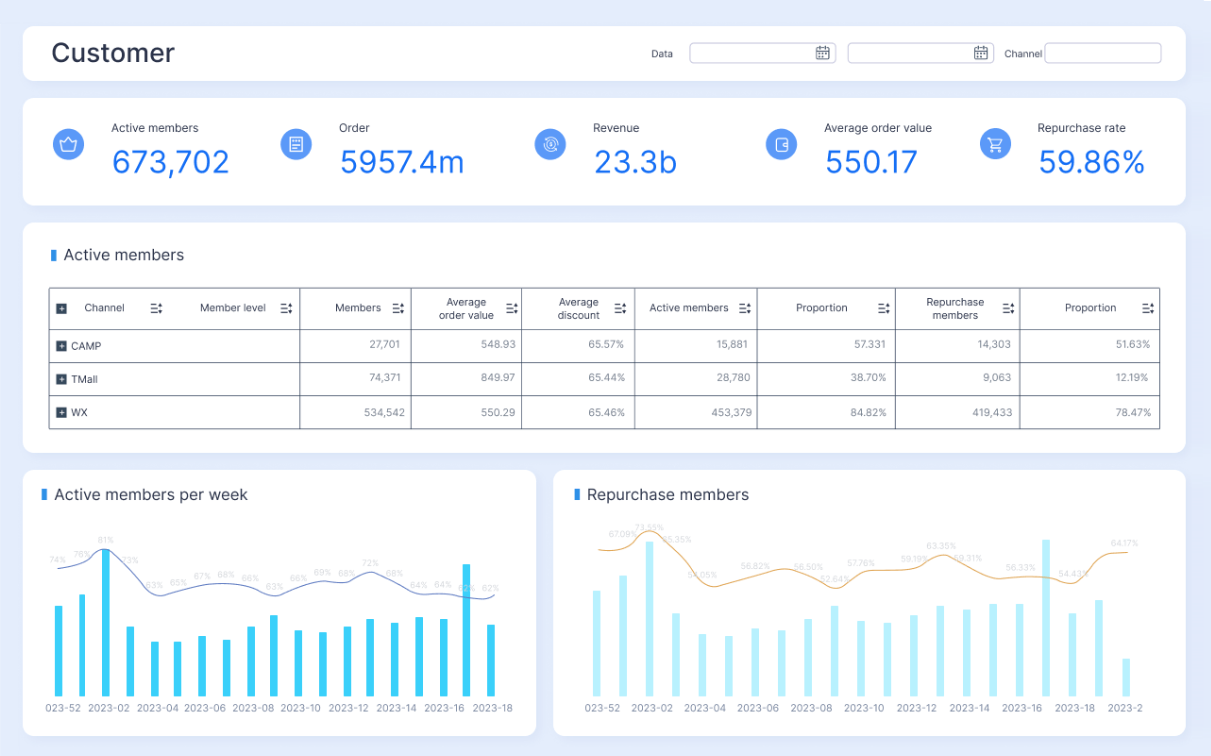
Data-Driven Retail Operations
Retailers who want to grow profitably must rely on data-driven decisions to guide every aspect of retail store operations. Tracking key performance indicators (KPIs) and using advanced analytics tools help retailers optimize operational performance, improve profitability, and drive sustainable growth.
KPI Tracking
Retailers align KPIs with business objectives to ensure every metric supports their goals. They prioritize impactful KPIs, such as sales performance, customer engagement, inventory management, and financial health. Reliable measurement depends on high-quality data from POS systems, ERP software, and customer feedback. Regular reviews and adjustments keep KPIs relevant as business needs evolve.
| KPI Name | What It Is | Why It's Important | How It's Measured / Tracked |
|---|---|---|---|
| Year-Over-Year Sales | Sales change vs. last year | Shows growth trends, strategy impact | Compare sales data year over year |
| Monthly Gross Profit Per Store | Revenue minus cost of goods sold, monthly | Finds cost-saving opportunities | Subtract COGS from revenue monthly |
| Average Transaction Value (ATV) | Average spend per transaction | Measures sales and upselling effectiveness | Divide total sales by number of transactions |
| Sales Per Employee | Sales generated by each employee | Evaluates productivity | Divide total sales by employee count |
| Store Traffic | Number of store and website visitors | Indicates marketing effectiveness | Use foot counters and web analytics |
| Customer Satisfaction Score | Customer satisfaction with service | Reflects service quality | Survey customers on satisfaction scale |
| Customer Retention Rate | Returning customers percentage | Measures loyalty and satisfaction | Formula: (E-N)/B, where E=end, N=new, B=beginning |
Retailers use these KPIs to benchmark operational performance, optimize pricing, and increase profit margins. FineBI enables real-time tracking and visualization, making it easier to spot trends and act quickly.
Performance Analytics
Performance analytics tools provide real-time insights into retail store operations. These platforms visualize process flows, uncover bottlenecks, and highlight deviations that affect operational performance. Dashboards display metrics like sales per employee, conversion rates, and customer retention. Managers use this data to make informed decisions, adjust staffing, and refine pricing strategies.
FineBI integrates scheduling, time tracking, and performance data, delivering shift-specific insights and trend analysis. Mobile dashboards and automated alerts empower managers to respond instantly to changes in demand or service quality. Predictive analytics identify emerging trends, supporting proactive management and continuous optimization.
Note: Retailers who leverage performance analytics can grow profitably by identifying inefficiencies, benchmarking against industry standards, and implementing targeted improvements.
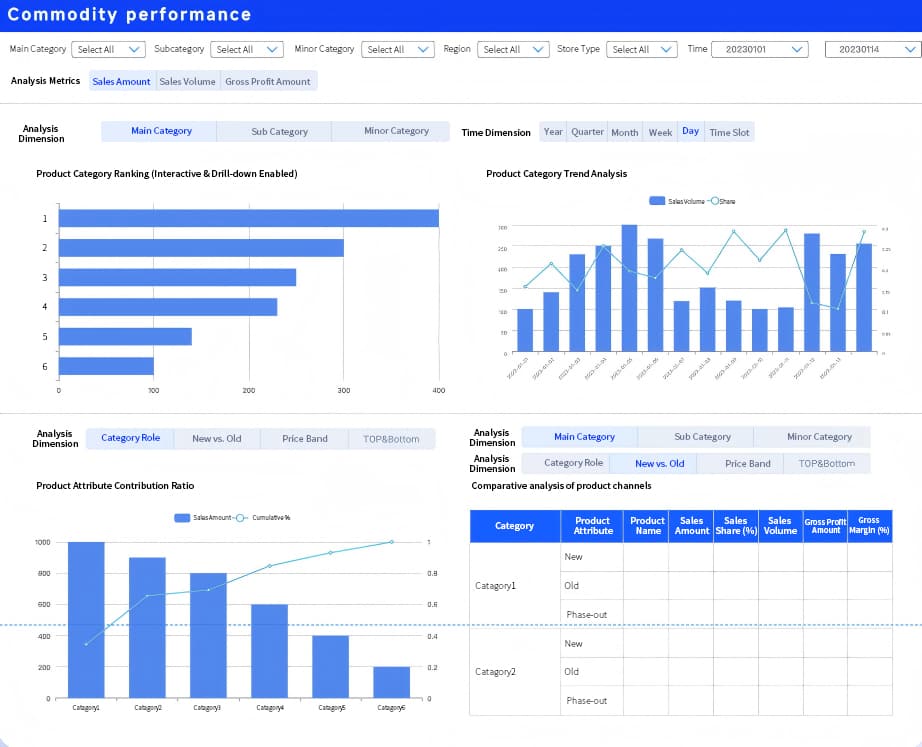
Continuous Improvement
Continuous improvement initiatives drive measurable gains in retail efficiency and profitability. Leading retailers like Walmart, Tesco, and Target have used data-driven analytics and methodologies such as Lean, Six Sigma, and Kaizen to streamline processes, reduce costs, and enhance customer satisfaction.
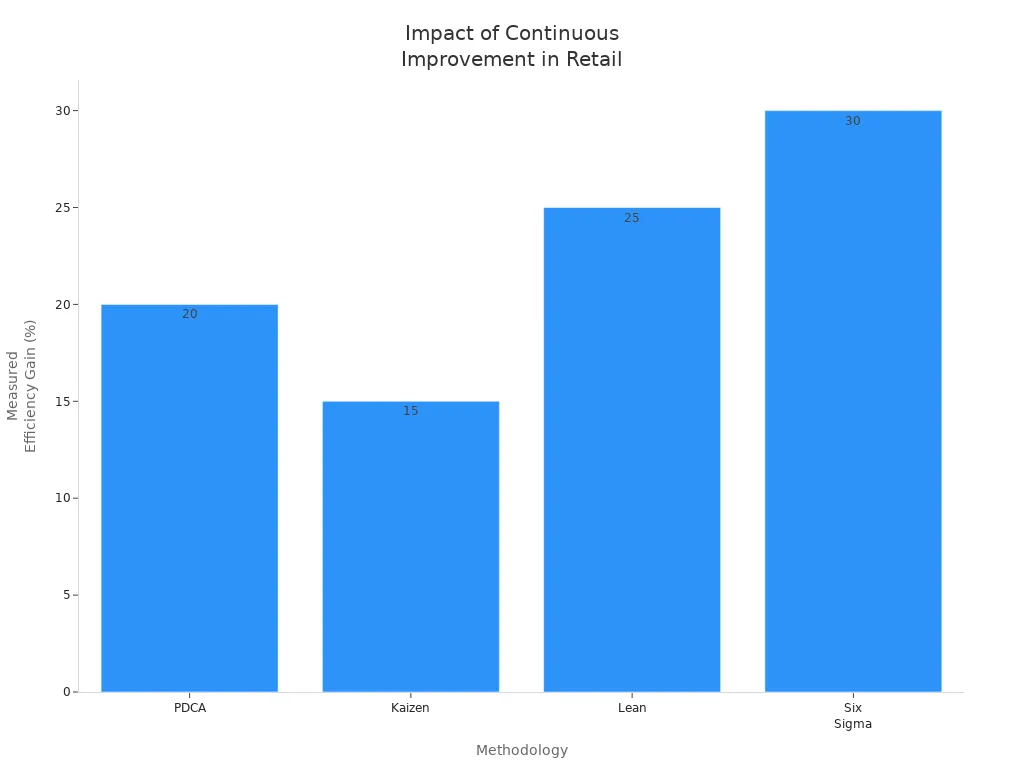
FineBI supports continuous improvement by providing real-time feedback, automated reporting, and predictive analytics. Retailers monitor the effects of improvement initiatives, adjust strategies, and sustain growth. Data-driven decision-making enables retailers to optimize supply chains, personalize service, and refine pricing, leading to higher profitability and operational excellence.
Retailers who embrace continuous improvement see faster process adoption, more innovation, and fewer quality issues. These efforts help them grow profitably, increase profit margins, and maintain a competitive edge in the market.
Retailers achieve business success by embracing smart solutions that optimize operations, enhance pricing strategies, and drive sustainable growth. Companies like Amazon and Tesla demonstrate that AI-powered automation, real-time data, and flexible integration deliver measurable improvements. Key strategies include leveraging FineBI for unified analytics, prioritizing employee training, and modernizing infrastructure. Retailers who focus on pricing optimization, real-time pricing adjustments, and dynamic pricing models see rapid growth. Pricing analytics, predictive pricing, and competitive pricing analysis support better decision-making. Transparent pricing policies, automated pricing tools, and pricing compliance ensure trust. Continuous pricing monitoring, pricing feedback, and pricing innovation drive ongoing growth. Retailers who adopt these strategies position themselves for long-term growth and operational excellence.
- AI-powered IoT devices and automation enable real-time pricing analysis and decision-making.
- Incremental modernization and flexible architectures support seamless pricing integration.
- Employee training and infrastructure upgrades are essential for pricing optimization.
- Phased pilot projects and cloud-based AI platforms help manage pricing costs.
- Automated pricing agents allow staff to focus on customer experience and growth.
| Company | Smart Solution Implemented | Key Benefits Achieved |
|---|---|---|
| Amazon | AI-powered robotics, automation, and dynamic pricing models | 25% reduction in order fulfillment costs; optimized pricing; improved efficiency |
| Tesla | Custom AI hardware for pricing and production optimization | Enhanced pricing data processing; improved production efficiency |
| Mayo Clinic | AI Factory for predictive pricing and diagnostics | Improved pricing accuracy; streamlined operations |
Retailers who leverage FineBI and smart pricing solutions unlock new opportunities for growth, efficiency, and customer satisfaction.
Click the banner below and upgrade your retail operations now!
Continue Reading about Retail Operations
What is Retail Industry Data Analysis and Why It Matters
Top Tools for Retail Data Analysis in 2025
FAQ

The Author
Lewis
Senior Data Analyst at FanRuan
Related Articles
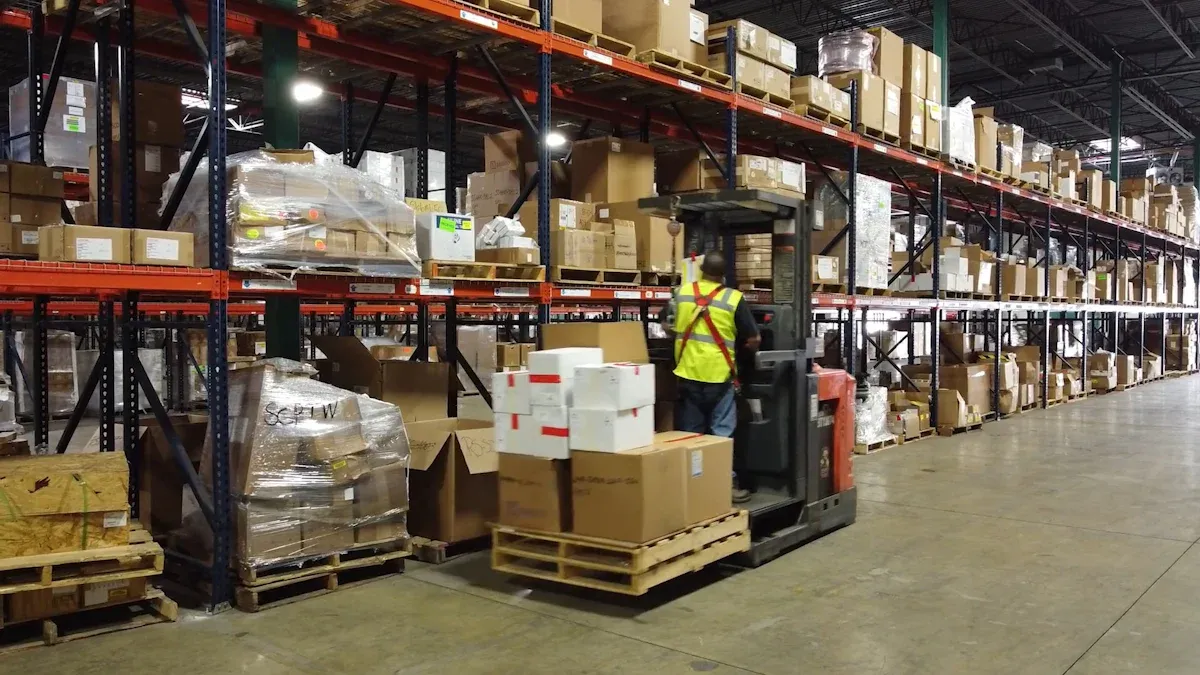
Top 10 Supply Chain Tracking Software for 2026
Compare the top supply chain tracking software for 2026 to boost visibility, automate workflows, and leverage AI analytics for smarter decisions.
Lewis
Dec 18, 2025

Top 10 Supply Chain Management Software for Small Businesses
See the top 10 supply chain management software comparison for small businesses in 2026. Compare features, pricing, and scalability to find your best fit.
Lewis
Dec 18, 2025
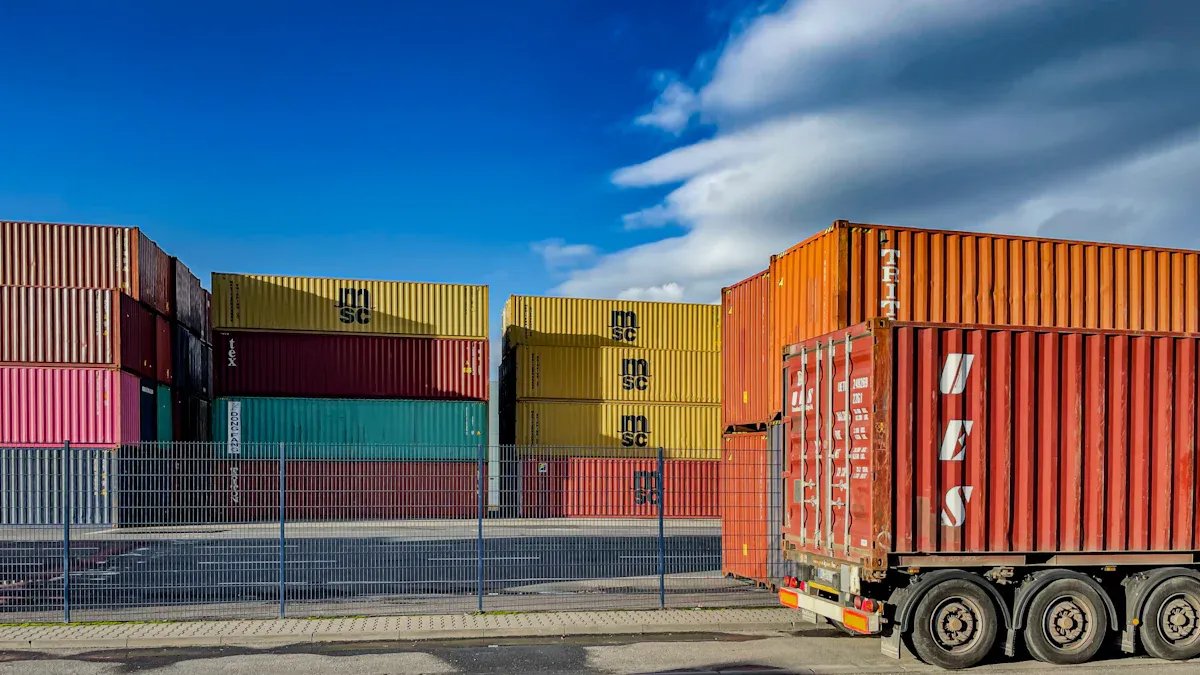
Top 10 Supply Chain Visibility Tools for 2025
Compare the top 10 supply chain visibility tools for 2025 to enhance real-time tracking, integration, and predictive analytics for efficient operations.
Lewis
Oct 29, 2025
